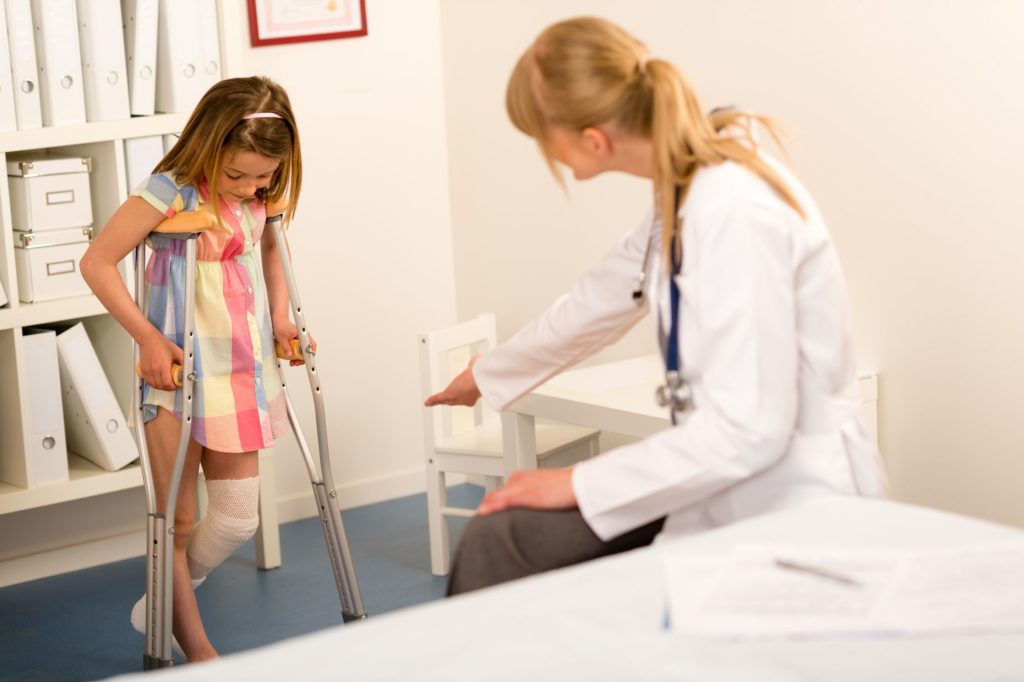Free Consultation
Free Consultation
Anytime we hear of a trend regarding a particular type of injury, especially where children are concerned, we tune in and pay attention. And recently, high chair injuries have been making headlines. According to the National Electronic Injury Surveillance System, approximately 9,400 injuries directly related to children and high chairs are seen and treated in U.S. emergency rooms annually—that’s a 22% increase since 2003. The most common cause? Falling from the high chair. The most common injury from such falls? Head injuries, such as concussion.
The researchers who conducted the studies found that two-thirds of the kids who were injured from a high chair fall were either standing or climbing on the high chair at the time of the injury.

“I tell parents that the top three things you can do to prevent high chair injuries is use the restraint system in the chair, use the restraint system and use the restraint system,” said Gary Smith, lead author of the study and director of the Center for Injury Research and Policy at Nationwide Children’s Hospital.
Part of what contributes to the severity of the injuries is that high chairs are generally placed on hard floors and often near cabinets, tables, and countertops. This added dynamic means that when a child does fall, he is likely to make contact with a hard and unforgiving surface.
This particular study that is making the news does not take into account children who are not seen in an emergency department. If the parent does not seek medical treatment, or if the parent takes the child to the pediatrician rather than the ER, those numbers are not included in these final tallies. Still, it begs the question: Why are these injuries on the rise? Or are they? Perhaps increased awareness of the dangers of closed head injuries compels more parents to seek emergency medical attention when a head injury is suspected rather than wait for more obvious signs of injury to appear. A better preventive step, of course, would be to secure the child properly to begin with.
As an injury lawyer, I want to emphasize a couple of points. First of all, always follow manufacturer’s instructions for safety reasons, first and foremost, but also, should an injury occur due to faulty manufacturing, the more effort on the part of the consumer to use the product as it was intended, the better the odds of recovering a settlement should the product cause harm. In the case of unrestrained children in high chairs, there isn’t much that a lawyer can do when the fault appears to lie with the consumer and not with the manufacturer.
For instance, if you strapped your child into a high chair and the restraint system was flawed, allowing the child to wiggle out of it and then fall, the responsibility probably lies with the manufacturer for releasing a high chair with a faulty fastener. But if a parent simply does not strap the child in, the manufacturer has no control over or responsibility in that decision. Therefore, the responsibility lies with the parent.
Even though determining fault seems pretty straightforward in most of these high chair incidents, other cases are not so obvious at first glance. For example, when a shopper trips and falls over a loose tile or wrinkled carpet in a retail store, the shopper may be quick to blame her own clumsiness, but in reality, if the floor presented a hazard, then the store is likely responsible and the victim would have a premises liability case. Even more complex are medical malpractice claims, which could include a number of individuals and entities when a person is harmed due to a medical device, pharmaceutical error, or other medical mistake.
The thing to keep in mind is that when you have been injured, unless you are without doubt that the accident is entirely your fault, it’s best to consult with an experienced injury lawyer who can help you review the circumstances. If it turns out that someone else is responsible for the fact that you were injured, your injury lawyer can help you seek compensation for your medical expenses and other losses associated with the accident.
About the author:
Joseph G. Macaluso is a personal injury lawyer practicing at the Bronx law firm of Macaluso & Fafinski, P.C. A graduate of Brooklyn Law School, Mr. Macaluso has been in private practice since 1990 with an exclusive focus on personal injury and medical malpractice. A member of the New York State Trial Lawyers Association, he has served on the Legislative Committee of this organization and is also a member of the Bronx County Bar Association and has served on the Board of Directors of Bronx Legal Services.